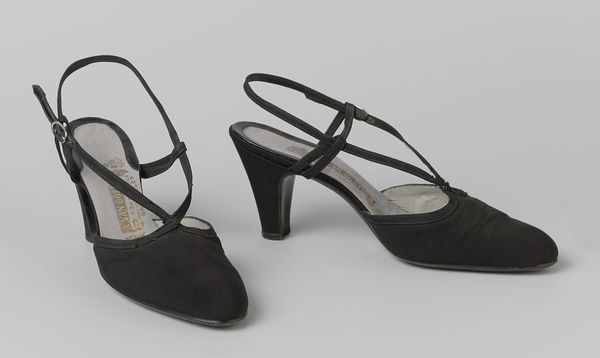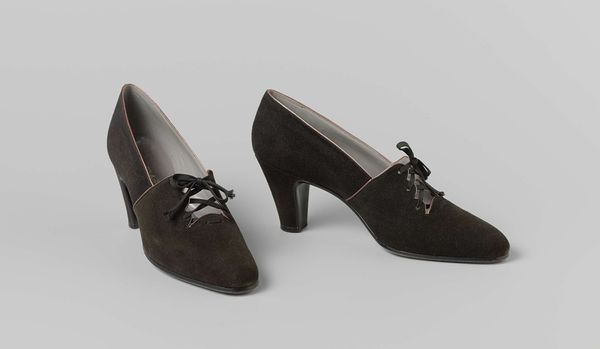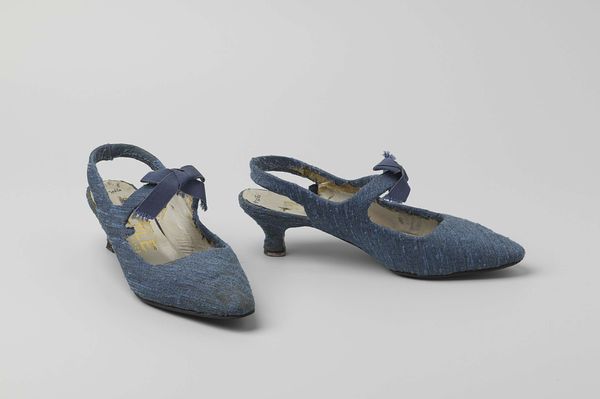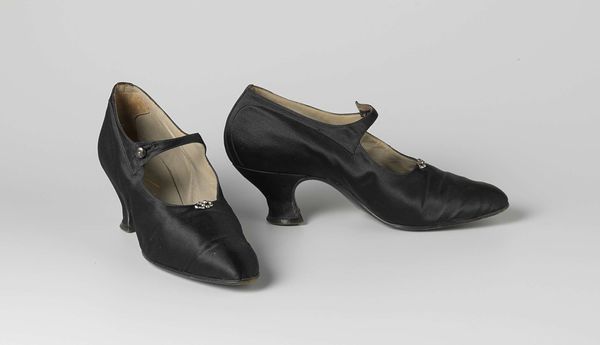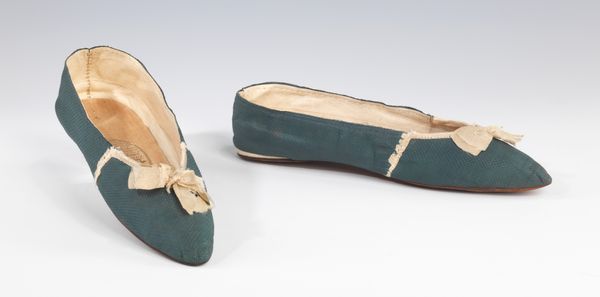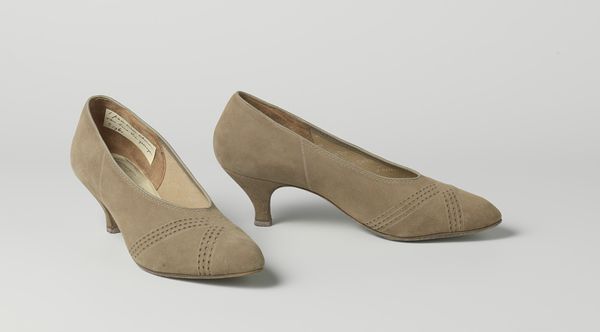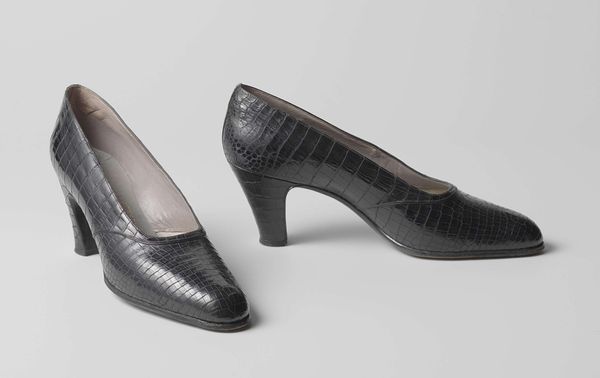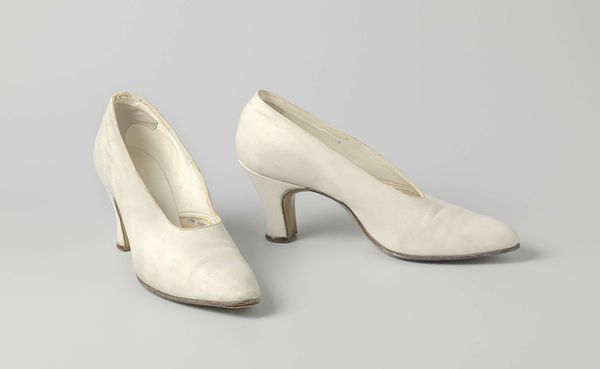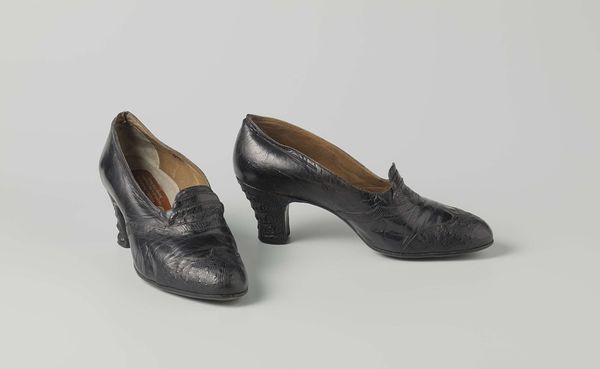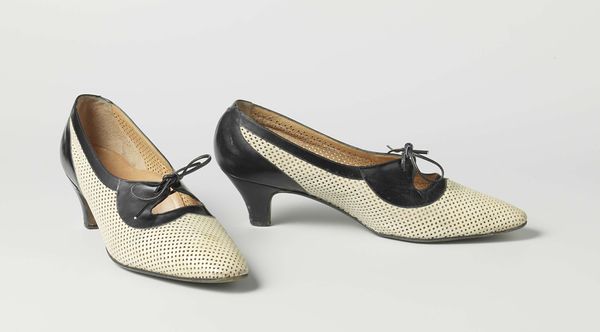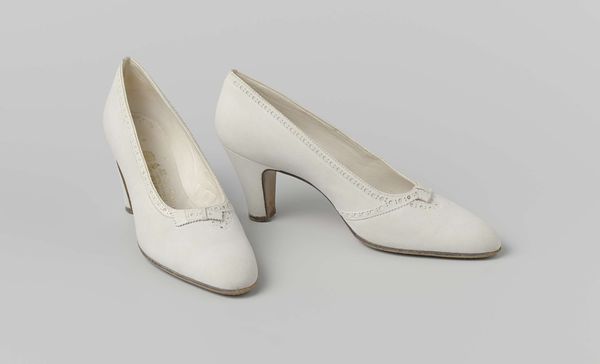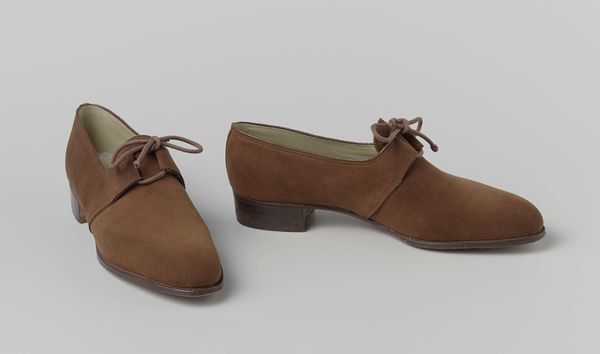
textile, photography
#
fashion mockup
#
product fashion photography
#
textile
#
photography
#
product design photgrpaphy
#
clothing photography
#
wearable design
#
metallic object render
#
product mock up
#
clothing photo
#
decorative-art
#
product render
#
clothing design
Dimensions: length 23 cm, width 7.7 cm, height 6.5 cm
Copyright: Rijks Museum: Open Domain
Editor: So, we're looking at a photograph of a pair of women's shoes titled "Damesschoen van zwart satijn met enkelband," made around 1920-1925. They are black satin with ankle straps and delicate heels. I find the overall effect quite elegant, evoking images of the roaring twenties. What does this footwear suggest to you? Curator: Elegance, yes, but let's also consider these shoes as artifacts embedded in the evolving social and political landscape of the early 20th century. What societal changes allowed, even encouraged, women to wear shoes like this in public? Think about the context surrounding the time it was worn, such as fashion industry dynamics and shifts in public behaviors and attitudes, especially during a vibrant moment when fashion grew hand in hand with political and social change. What was the effect of those factors on a lady deciding on shoes of this nature? Editor: I never considered that angle. I was focused on the flapper image. It seems like the loosening of social mores probably impacted things significantly. These shoes, therefore, would not just be footwear; they would have become a statement. Curator: Exactly. Fashion items become public displays of identity. Were these shoes widely available, or were they limited to a certain socioeconomic class? This speaks to the democratization – or lack thereof – within fashion itself. What message did black satin convey, in contrast to, say, a brighter colour, in the fashion discourse of the period? Editor: So much to consider beyond the surface aesthetics! I appreciate thinking about these items within the broader scope of fashion, as influenced by larger societal factors, and its meaning for a diverse society. Curator: Indeed. By viewing the artwork through a historical lens, we not only appreciate its inherent artistry but also uncover rich and very important details and the complexities that are hidden within the most commonplace elements.
Comments
No comments
Be the first to comment and join the conversation on the ultimate creative platform.
